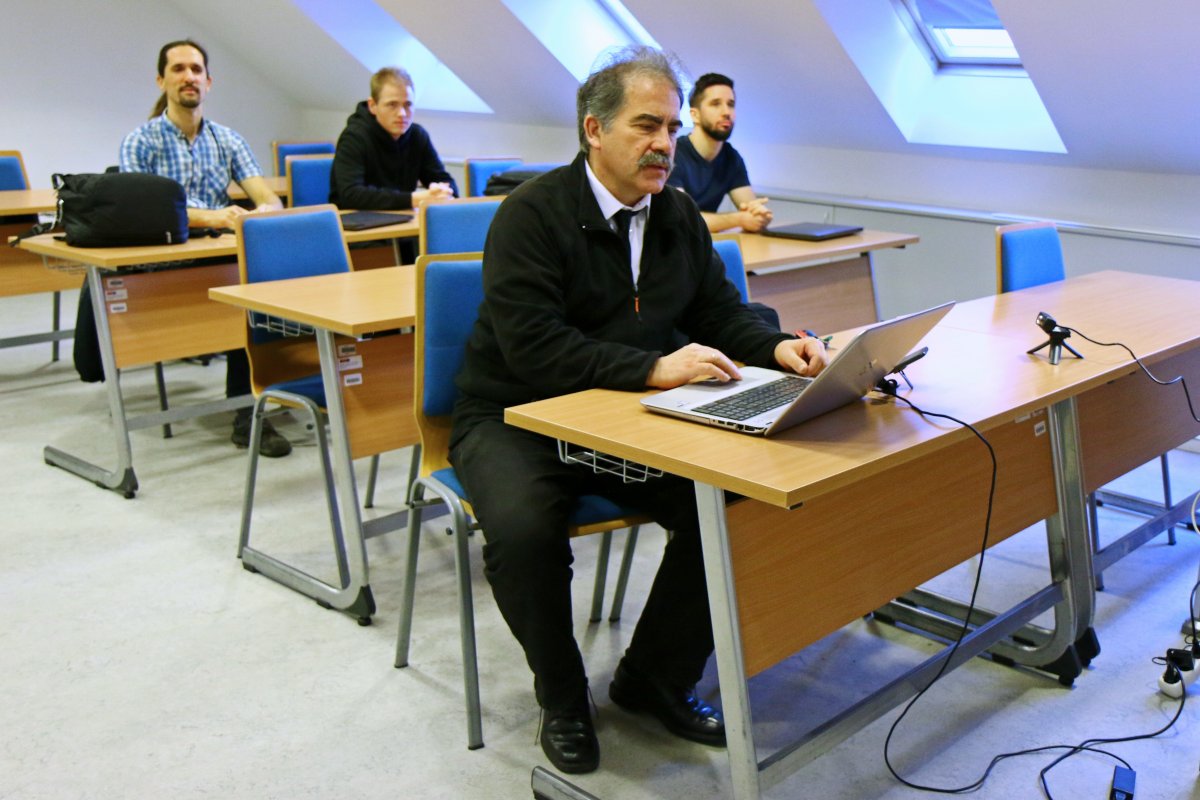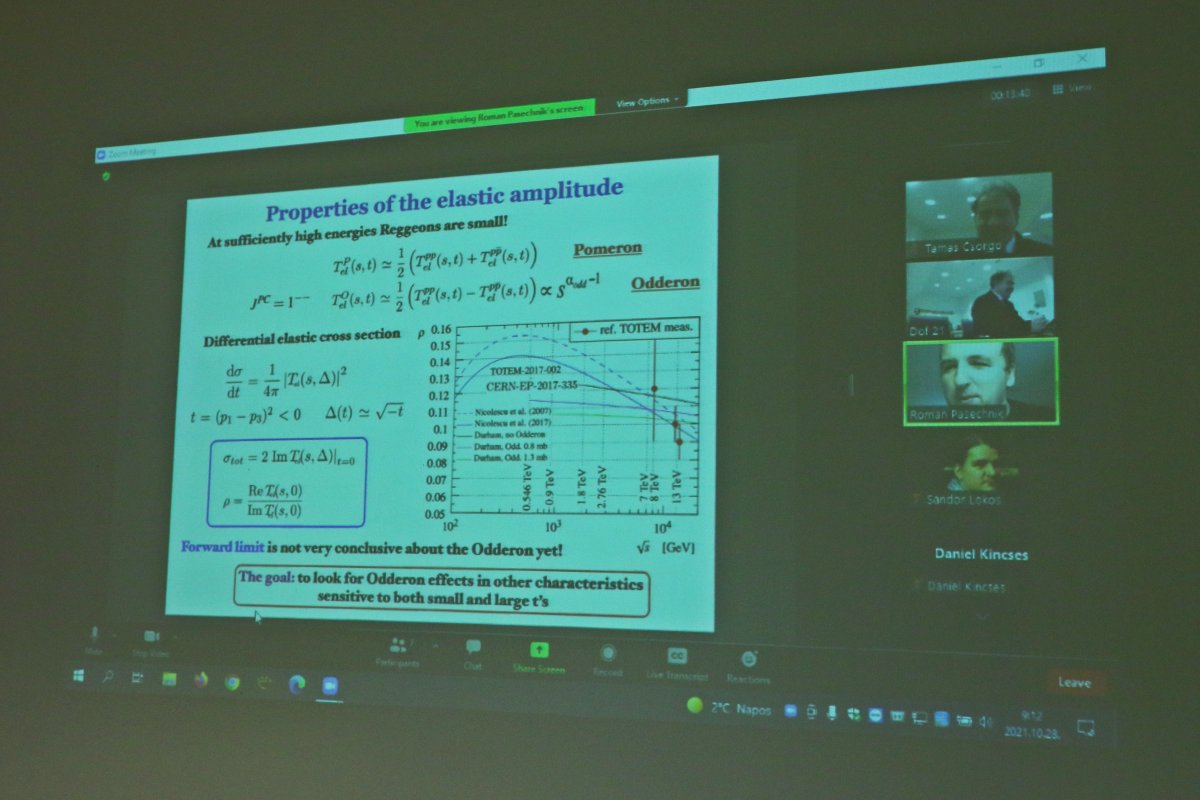Decoration of Hungarian and Swedish scientists for the discovery of the Odderon at the 2021 Day of Femtoscopy, an international meeting at the MATE Károly Róbert Campus, Gyöngyös, Hungary
Dr. Zoltán Bujdosó, the director general of MATE Károly Róbert Campus greeted participants from Hungary, Poland, The Netherlands and from the US at the opening of the 7th Day of Femtoscopy. This international scientific meeting, the 2021 edition of the Day of Femtoscopy series was co-organized by the MATE Károly Róbert Campus, Gyöngyös, the Wigner Research Centre for Physics and the Eötvös Loránd University, Budapest, Hungary.

Dr. Bujdosó stressed that two colleagues from the MATE Károly Róbert Campus participated in the discovery of the Odderon by a Hungarian-Swedish team of five researchers. In an intense international scientific competition, that lasted for 48 years, this Hungarian-Swedish team published for the first time a statistically significant signal of the elusive particle called the Odderon. This result, published in February 2021, implies the existence of several similar compound states called glueballs, hence the discovery of the Odderon may open up a new chapter in the physics of strong interactions.
Dr. Zoltán Bujdosó decorated the four Hungarian members of the Hungarian-Swedish team on the occasion of the 2021 Researcher’s Night, a science outreach event with the participation of the Károly Róbert Campus, Gyöngyös, Hungary. He decorated the Swedish member of the team, Prof. Roman Pasechnik, docent at the University of Lund, Sweden, on the occasion of the 7th Day of Femtoscopy in October 2021.

The Hungarian-Swedish team, recognized for their discovery of the Odderon, includes the following physicists:
- Tamás Csörgő, member of the Academia Europaea, scientific advisor at the Wigner Research Centre for Physics, research professor at the MATE Institute of Technology, team-leader, Budapest and Gyöngyös, Hungary;
- Tamás Novák, Ph.D, docent and head of department, MATE Institute of Technology, Gyöngyös, Hungary;
- Roman Pasechnik, Ph.D, docent and senior lecturer, Department of Astronomy and Theoretical Physics, University of Lund, Lund, Sweden;
- Ster András, physicist, Wigner Research Centre for Physics, Budapest, Hungary
- Szanyi István, physicist, Wigner Research Centre for Physics, Ph. D. student at the Eötvös University, Budapest, Hungary.
The central topic of the 7th Day of Femtoscopy has been, not surprisingly, the critical analysis of those three published papers that presented discovery level Odderon results, and the critical analysis of the conditions that are necessary for such a discovery.

„The most important new presentations at the 2021 Day of Femtoscopy were about the discovery of the Odderon and the confirmations of the discovery of Odderon exchange. As of now, three scientific publications have proven the effect of Odderon exchange in the data of the CERN LHC accelerator in Europe and the Tevatron accelerator in the US” – emphasized professor Csörgő, the principal investigator of the Hungarian-Swedish team. „In the field of science, competition and cooperation are both present simultaneously and proceed hand in hand. At the 7th Day of Femtoscopy, we have also discussed the results of scientific crosschecks, that are similar to doping tests in competitive sports. Our results passed these tests, too. Our certificate of recognition for the discovery of Odderon is somewhat similar to the announcement of the results of an international tournament. Thank you so much.”
text: Tamás Csörgő, Réka Nagy
pictures: Réka Nagy, Roman Pasechnik
The first three publications, that proved the existence of Odderon and its exchange:
[1] T. Csörgő, T. Novák, R. Pasechnik, A. Ster, I. Szanyi, Eur.Phys.J.C 81 (2021) 2, 180, (published on February 23, 2021)
[2] T. Csörgő and I. Szanyi, Eur.Phys.J.C 81 (2021) 7, 611 (published on July 13, 2021)
[3] V. Abazov et al, D0 and TOTEM Collaboration, Phys.Rev.Lett. 127 (2021) 6, 062003 (published on August 4, 2021)



